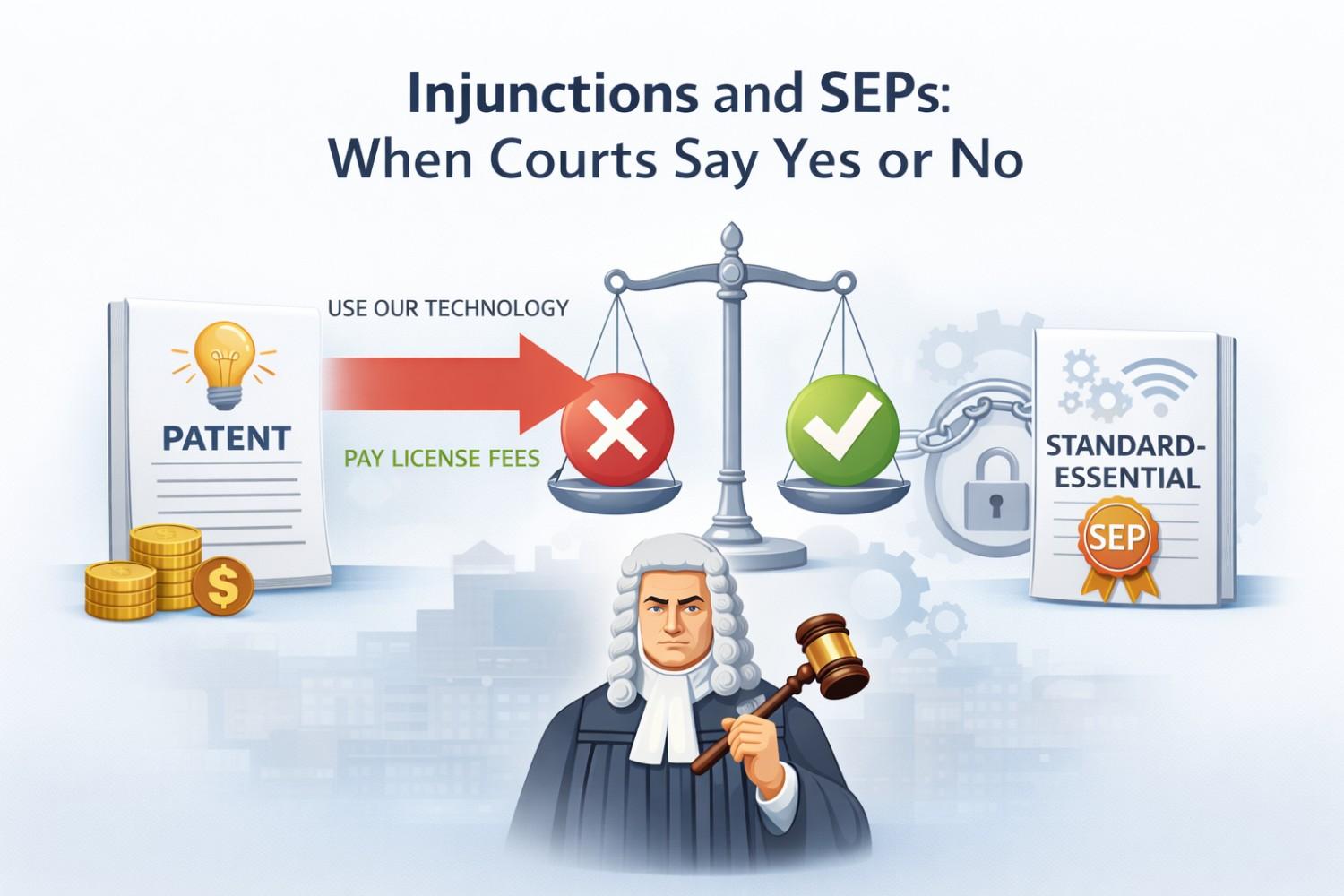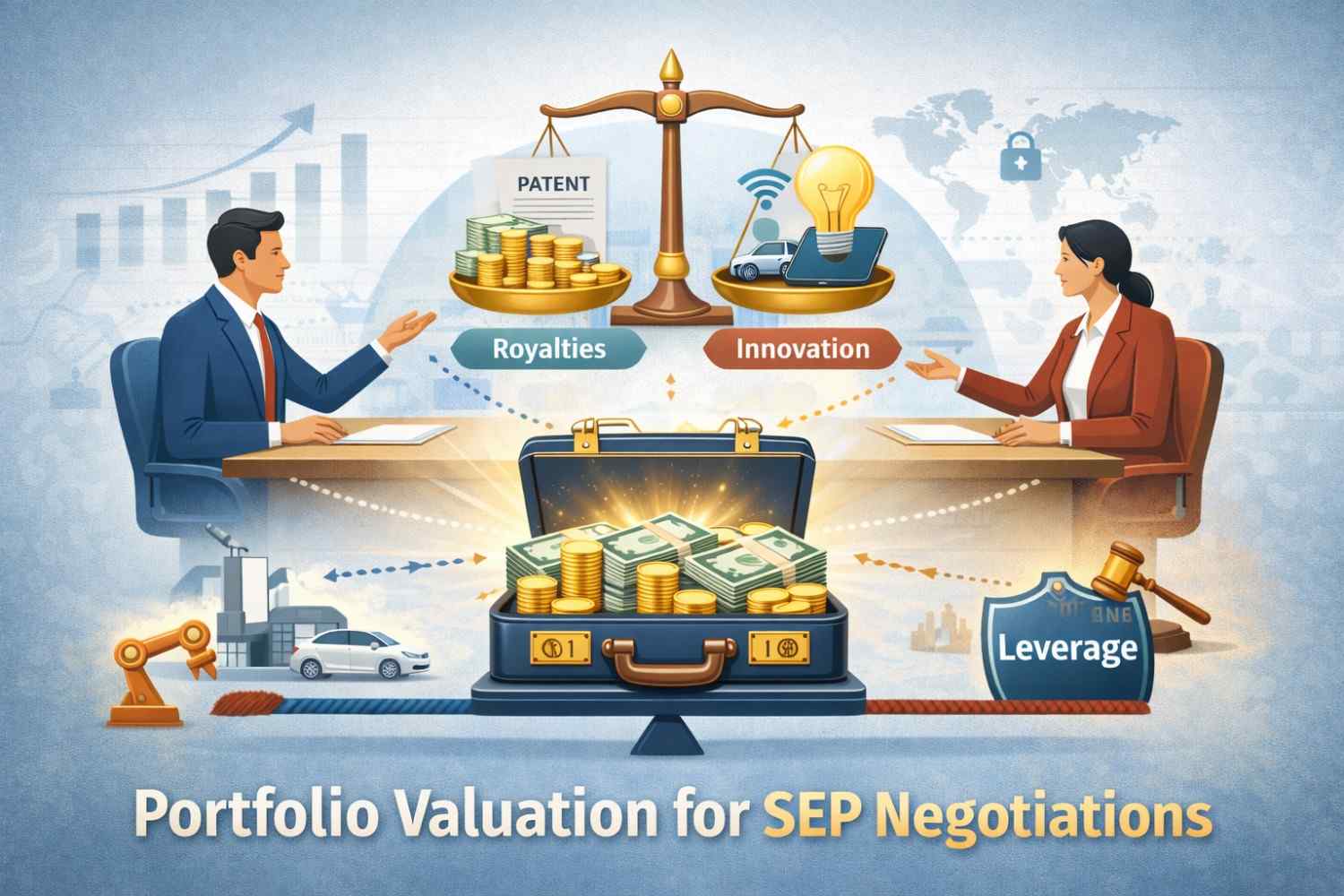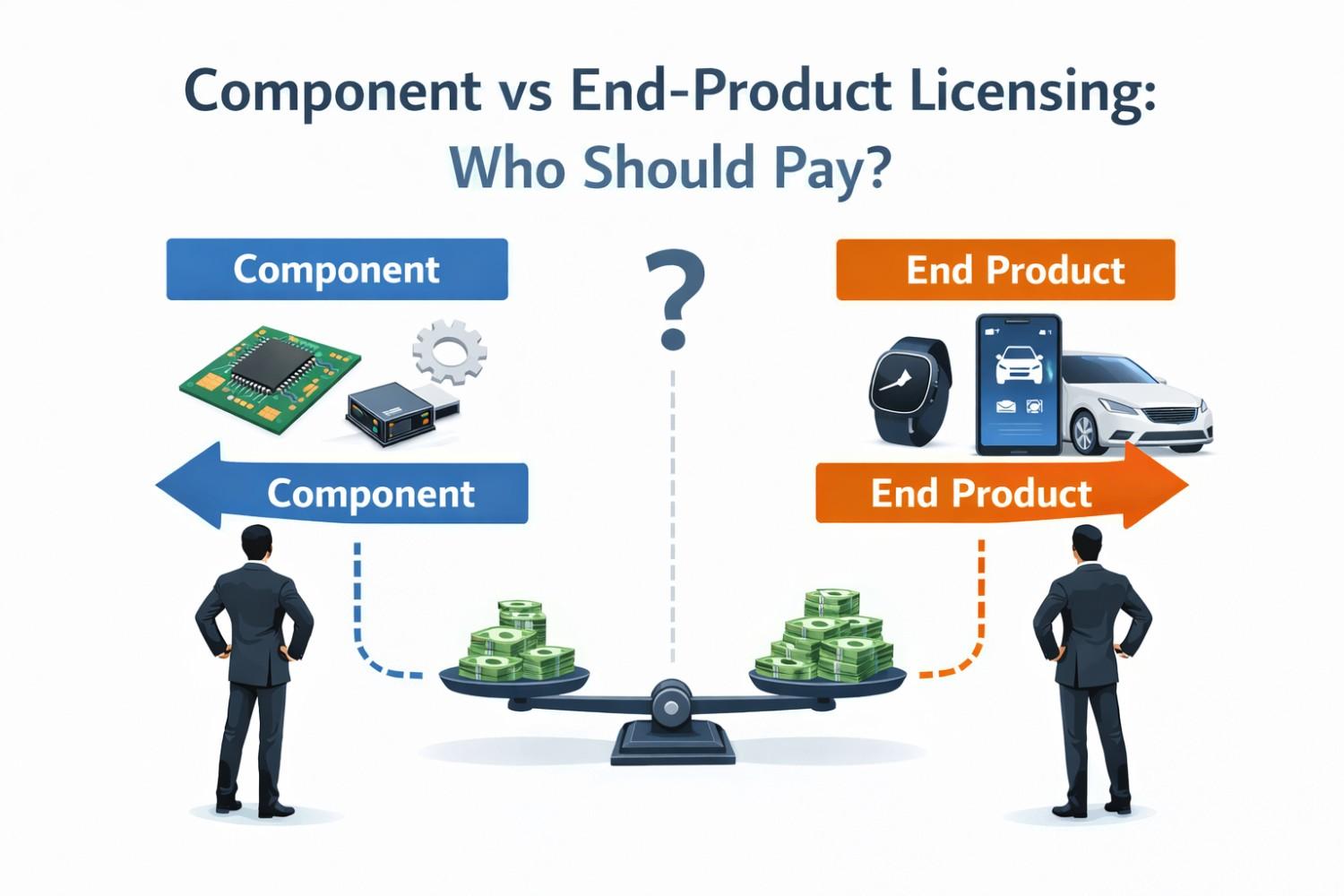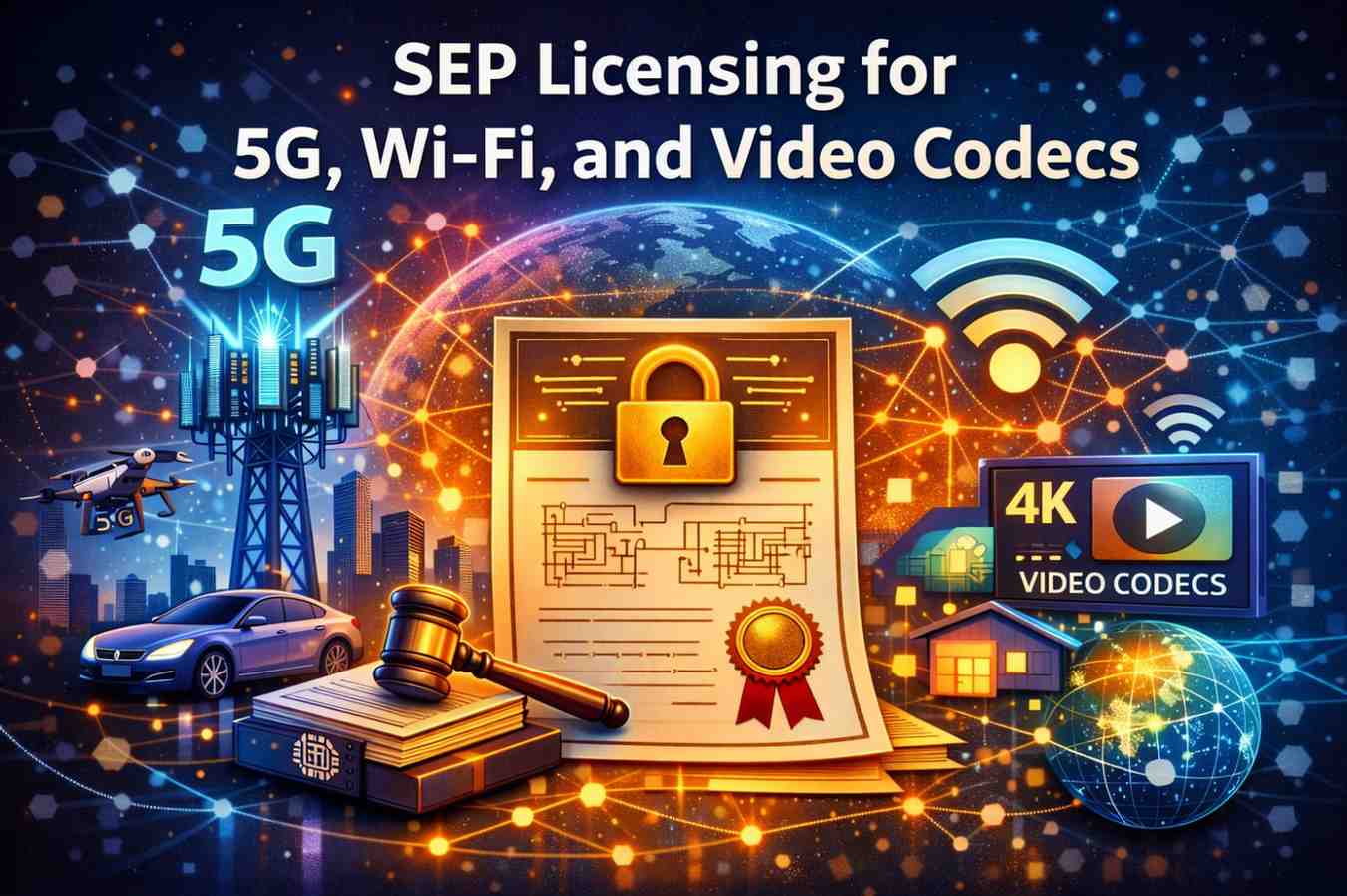Tag: Patent Registration
-

NDAs, Term Sheets, and Most-Favored-Nation in FRAND Deals
If you build technology, your ideas are valuable long before they turn into revenue. The moment you talk to a partner, investor, or large company, your leverage starts to change. This is where NDAs, term sheets, and FRAND promises quietly shape your future. Most founders sign these papers fast and move on. That is a…
-

Willing Licensor vs Willing Licensee: Good-Faith Negotiation Playbook
Most patent disputes do not begin in a courtroom but in a simple exchange that sets the tone for everything that follows. One party says they are open to a license, the other pushes back, and in that moment the labels of “willing licensor” and “willing licensee” quietly start to form. Courts care deeply about…
-

Injunctions and SEPs: When Courts Say Yes or No
Let’s start with the hard truth. If your tech becomes part of a standard, your patent can turn into either a gold mine or a paperweight. The difference often comes down to one simple word: injunction. An injunction is when a court tells someone to stop using your invention. Full stop. No more sales. No…
-

Global SEP Strategy: US, EU, China, UK Compared
Standard Essential Patents decide who gets paid and who gets pushed around. If you are building anything that touches networks, chips, video, audio, or connectivity, SEPs are not optional. They shape leverage, revenue, and even survival. One bad move can lock you into weak deals for years. One smart move can turn your tech into…
-

Patent Pools 101: Avanci, MPEG LA, and When to Join
If you are building real tech, not slides, not ideas, but working systems that touch standards like wireless, video, or connectivity, patent pools will show up in your world whether you like it or not. Most founders hear about them too late. Usually when a letter lands in their inbox and suddenly patents feel scary,…
-

Portfolio Valuation for SEP Negotiations
If your company works with standards like 5G, Wi-Fi, or video, your patents can quietly be worth a lot of money. Not someday. Right now. The problem is that most founders do not know how that value is measured, or how to defend it when real negotiations start. That is what this article is about.…
-

Component vs End-Product Licensing: Who Should Pay?
If you are building a core piece of tech that other products depend on, one quiet decision can shape your entire future: do you charge the maker of the component or the seller of the final product? This choice affects how much leverage you have, how easy it is to get paid, and whether your…
-

SEP Licensing for 5G, Wi-Fi, and Video Codecs
Patents should protect progress, not slow it down. But when it comes to 5G, Wi-Fi, and video codecs, many founders feel stuck the moment they hear the words “SEP licensing.” It sounds heavy, legal, and risky. The truth is simpler. If you are building anything that talks, streams, connects, or shares data, SEPs already touch…
-

Top-Down vs Bottom-Up FRAND: Which Method Fits Your Case
FRAND fights decide real money, real leverage, and real outcomes for companies building core tech. If you get the method wrong, you can lose value fast. This article breaks down the two main ways courts and negotiators set FRAND rates—top-down and bottom-up—in plain, simple words, so you can see which one fits your situation and…
-

Comparable Licenses: Using Market Data to Set FRAND
Most fights over FRAND do not start in court. They start with confusion. One side says a license fee is fair. The other side says it is not. Both sides claim the market supports them. And suddenly, a technical issue turns into a long, slow, expensive problem. Comparable licenses are the clean way out of…